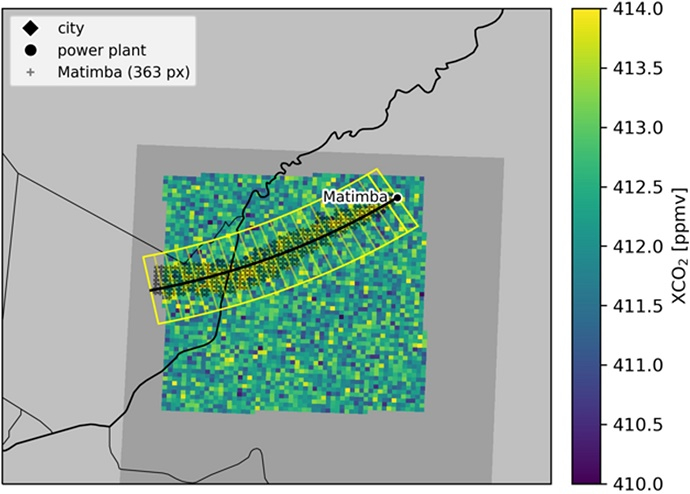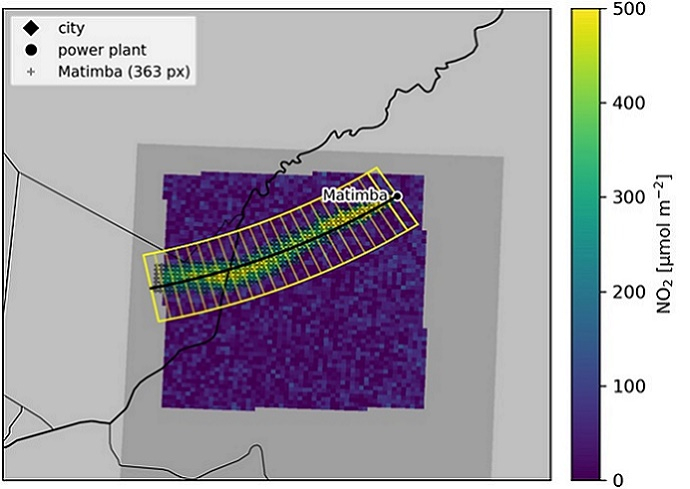

The three-year ECMWF-coordinated project for a prototype system for a Copernicus CO2 service (CoCO2) to monitor anthropogenic CO2 emissions worldwide has concluded its ambitious programme successfully.
The purpose of this EU-funded initiative was to feed into a permanent anthropogenic greenhouse gas emissions Monitoring and Verification Support Capacity (CO2MVS). This capacity will provide continuous monitoring of carbon dioxide (CO2) and methane (CH4) emissions and fluxes using a combination of observations and Earth system modelling.
CO2MVS is being developed as part of the EU’s Copernicus Atmosphere Monitoring Service (CAMS), implemented by ECMWF. Other EU-funded projects that will feed into CO2MVS are still ongoing.
“CO2MVS is expected to be up and running by 2026. We will then have the tools to monitor anthropogenic greenhouse gas emissions globally and locally,” said Richard Engelen, the Coordinator of the CoCO2 project and Deputy Director of CAMS. “The ultimate goal is to support efforts to keep global warming in check.”
Achievements of CoCO2
CoCO2 followed in the footsteps of the CHE project, which ended in 2020 and made a number of recommendations. CoCO2 was then able to make significant progress in developing CO2MVS prototype systems.
Different building blocks that were addressed included:
- An assessment of the current state of in-situ observation sites required to monitor anthropogenic greenhouse gas emissions
- Prior knowledge of emissions and natural fluxes that will be used as input to CO2MVS
- The assimilation of observations into models to estimate the emissions as accurately and completely as possible
- The consideration of local scales as well as global scales for all of the above, going as far as looking at individual plumes from, for example, power plants or emissions from cities.
Work was also done on evaluation and quality control. New ways had to be devised to do this with emissions which cannot be observed directly.
In addition, CoCO2 looked at uncertainties in all parts of CO2MVS. There are, for example, uncertainties in the observations, in the prior information used, in the modelling and in data assimilation.
Finally, CoCO2 also did some groundwork for the future user interface, so that CO2MVS will be of maximum benefit to its users.
“Overall, CoCO2 has seen excellent progress on all these fronts. Over the next few years, we will implement new services based on these results within CAMS,” Richard says.
As part of CoCO2, a high-resolution ‘nature run’ of fluxes of CO2, CH4 and CO has been produced using the latest developments of priors and modelling. It is intended to represent environmental conditions as accurately as possible and is here shown for CO2 for the year 2021.
The road to CO2MVS
Further progress is expected from two more recent EU-funded research projects coordinated by ECMWF:
- CORSO is for example looking at how information on CO2 emissions can be obtained by observing other emitted species. A good example is nitrogen dioxide (NO2), which is emitted by cars and power plants at the same time as CO2. A clearer signal is provided by emissions of NO2, which can thus be used for information on CO2.
- CATRINE will improve the numerical aspects of the transport of atmospheric tracers, with an emphasis on long-lived greenhouse gases.
“The findings from these two projects will also be considered in building CO2MVS,” Richard says.


Example of an emission plume resulting from the Matimba powerplant in South Africa, identified by a plume detection algorithm using simulated satellite observations of CO2 and NO2. The observation of NO2 concentrations at the same time as the CO2 concentrations helps to better identify the extent of the plume. This work started in CoCO2 and is continued within the CORSO project. XCO2 stands for the column-averaged concentration of carbon dioxide. (Credit: EMPA)
In addition, as part of the Copernicus Sentinel programme, a Copernicus satellite mission (CO2M) is being developed by the European Space Agency (ESA) and the European Organisation for the Exploitation of Meteorological Satellites (EUMETSAT) to support CO2MVS.
The constellation of satellites will be able to measure concentrations of CO2 and CH4 in the atmosphere with an unprecedented combination of accuracy, coverage, and detail.
They are expected to be launched in late 2026 and to become operational in 2027.
Acknowledgements

The CoCO2 project has received funding from the European Union's Horizon 2020 research and innovation programme under Grant Agreement No. 958927. Views and opinions expressed are, however, those of the authors only and do not necessarily reflect those of the European Union or the Commission. Neither the European Union nor the granting authority can be held responsible for them.
